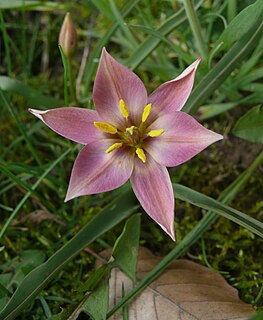
Mahogany is a straight-grained, reddish-brown timber of three tropical hardwood species of the genus Swietenia, indigenous to the Americas and part of the pantropical chinaberry family, Meliaceae.

Byfield National Park is a national park in the Shire of Livingstone, Queensland, Australia.

Pandanus is a genus of monocots with some 750 accepted species. They are palm-like, dioecious trees and shrubs native to the Old World tropics and subtropics. The greatest number of species are found in Madagascar and Malesia. Common names include pandan, screw palm, and screw pine. They are classified in the order Pandanales, family Pandanaceae.

Casuarina is a genus of 17 tree species in the family Casuarinaceae, native to Australia, the Indian subcontinent, southeast Asia, islands of the western Pacific Ocean, and eastern Africa. It was once treated as the sole genus in the family, but has been split into four genera.

Pandanus tectorius is a species of Pandanus (screwpine) that is native to Malesia, eastern Australia, and the Pacific Islands. It grows in the coastal lowlands typically near the edge of the ocean. Common names in English include thatch screwpine, Tahitian screwpine, hala tree, pandanus, and pu hala in Hawaiian. The fruit is sometimes known as hala fruit.

Chamaerops is a genus of flowering plants in the family Arecaceae. The only currently fully accepted species is Chamaerops humilis, variously called European fan palm or the Mediterranean dwarf palm. It is one of the most cold-hardy palms and is used in landscaping in temperate climates.

Nyctophilus arnhemensis, known as the northern or Arnhem long-eared bat, is a species of Chiroptera (bats) native to northern regions of Australia. The distribution range is from north-western Queensland to northern Western Australia.
The wildlife of Mauritius is composed of its flora and fauna. Mauritius is located in the Indian Ocean to the east of Madagascar. Due to its isolation, it has a relatively low diversity of wildlife; however, a high proportion of these are endemic species occurring nowhere else in the world. Many of these are now threatened with extinction because of human activities including habitat destruction and the introduction of non-native species. Some have already become extinct, most famously the dodo which disappeared in the 17th century.
Allobates humilis is a species of frog in the family Aromobatidae. It is endemic to western Venezuela where it is known from the Trujillo and Táchira states. Its natural habitats are seasonal montane forest and cloud forest. This locally common frog is associated with temporary ponds. It is threatened by habitat loss; the lagoon at the type locality has already disappeared.

Acerodon is a genus of bats in the family Pteropodidae containing five species, all native to forests in Southeast Asia, and all considered threatened. They are closely related to Pteropus.

Polistes humilis is a species of wasp in the Vespidae family that is found throughout Australia and which has been introduced to northern New Zealand. Also known as the common paper wasp, this species can be identified by their long thin legs and banded yellow and black coloring. This species has been known to re-utilize old nests. While the species does not exhibit morphological class differences, there are distinct behavioral differences between queens and workers. In addition, the species is eusocial and benefits from relatedness between individuals. This species of wasp is known for delivering a painful sting, especially when their nest is disturbed, a behavior that has been developed as a nest defense mechanism. While wasps are often viewed negatively, they play an important pollination role for many plants.

Stylosanthes is a genus of flowering plants in the legume family, Fabaceae and contains numerous highly important pasture and forage species. It was recently assigned to the informal monophyletic Pterocarpus clade of the Dalbergieae. The common name pencilflower is sometimes used for plants in this genus.

Tulipa humilis is a species of flowering plant in the lily family, found in Syria, Lebanon, Israel, Turkey, Iran, and the North Caucasus region of Russia. The flowers are pink with yellow centers. Its preferred habitat are rocky mountain slopes. It is known by several other names in horticulture.

Benstonea is a genus of flowering plants in the family Pandanaceae. It was formerly classified as Pandanus subgenus Acrostigma, but in 2012 was recognized as a distinct genus based on morphology and DNA sequencing. Benstonea is distributed from India to Fiji with centres of diversity in Borneo, Peninsular Malaysia and New Guinea.

Iris humilis is a plant species in the genus Iris, it is also in the subgenus of Iris and in the Psammiris section. It is a rhizomatous perennial, with a wide distribution range from Europe to Russia to China, via Mongolia and Kazakhstan. It has sword-shaped leaves, a short stem and yellow flowers with an orange beard. It is cultivated as an ornamental plant in temperate regions.

Pandanus glaucocephalus is a species of plant in the family Pandanaceae, endemic to Mauritius.
Pandanus barkleyi is a species of plant in the family Pandanaceae, endemic to Mauritius.
Pandanus incertus is a species of plant in the family Pandanaceae, endemic to Mauritius.

Xenocatantops humilis is the type species of grasshoppers in its genus, belonging to the family Acrididae and subfamily Catantopinae.
















